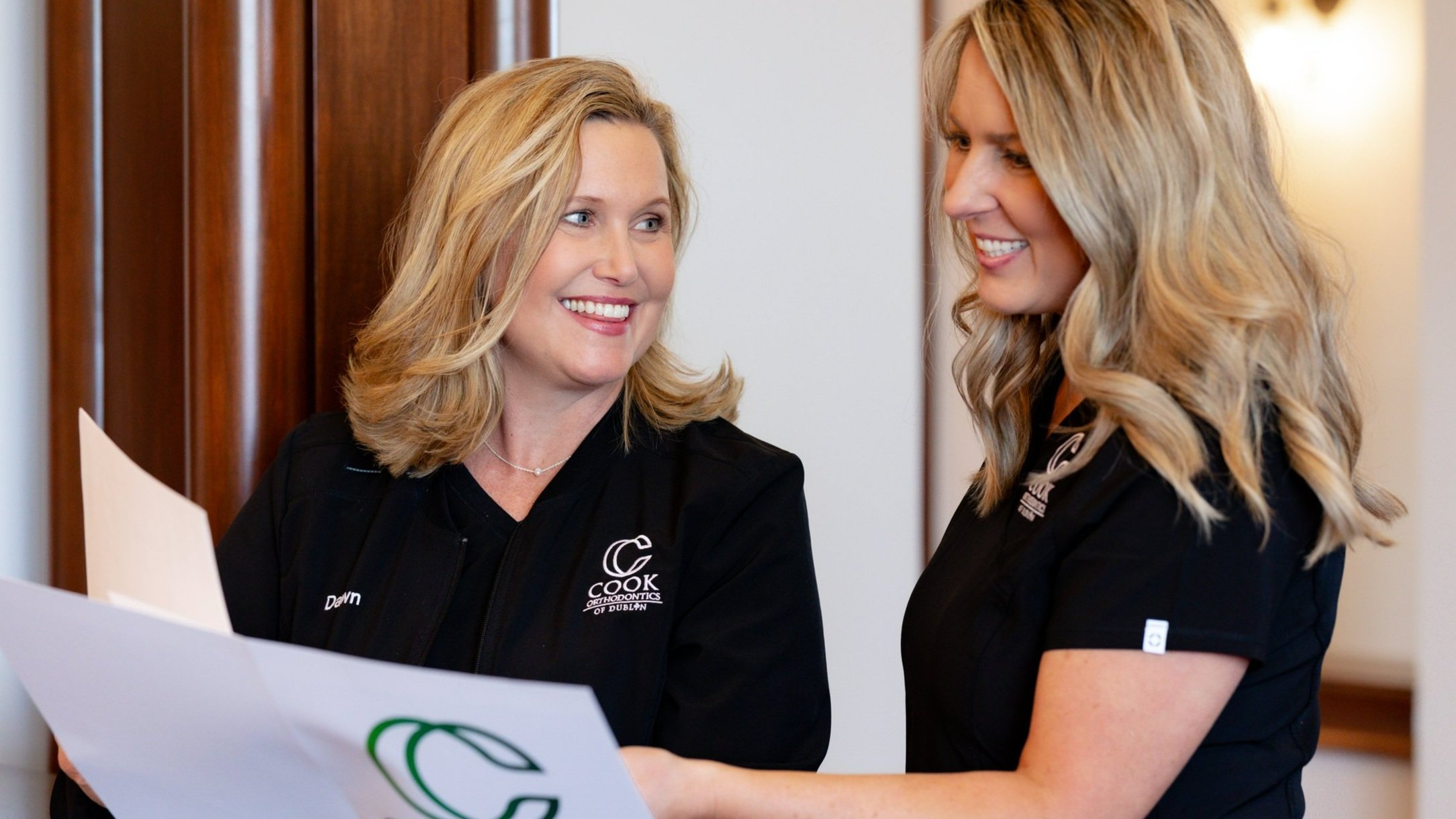
FAQs
Here are some commonly asked questions that we get when it comes to orthodontics and orthodontic care.
-
You may wonder why children who still have baby teeth are wearing braces these days. In the past, it was customary to wait to visit an orthodontist as a teenager when all of the baby teeth were lost. Orthodontics is a much different experience than many of us adults remember it to be for many reasons including technological improvements in appliances and advances in orthodontic technique and procedures. Beginning to influence their final smile early in childhood has a positive contribution to one’s self-esteem, younger patients are more compliant with following instructions and they have a positive attitude towards orthodontics because their peers are often having the similar experiences…and let’s not forget how much fun decorating braces with colors is!
The American Association of Orthodontists recommends children get their first check-up at the first recognition of an orthodontic problem, but no later than age 7. Around that age, children have a mix of baby (primary) teeth and permanent teeth. An examination as permanent teeth take the place of baby teeth, and as the face and jaws are growing, gives the orthodontist a wealth of information. If a problem exists, or if one is developing, your orthodontist is able to advise you on whether treatment is recommended, when it should begin, what form treatment will take, and estimate its’ length of time.
Early orthodontic treatment can help minimize the need for more extensive treatment as teens or adults, such as extraction of permanent teeth or orthognathic jaw surgery. The goal of early treatment is to create an environment to allow the permanent teeth to erupt as close to an ideal position as possible. This makes the teeth more stable long term and often shortens the amount of time patients have to spend in full braces during their teenage years, often called “Phase 2”.
-
You will continue to see your general dentist for cleanings and exams every 6 months while undergoing orthodontic treatment.
-
There is no one set answer on the cost of orthodontic treatment. That’s because it’s an individualized treatment process to fit each patient’s needs and goals. The cost depends on factors like how severe your case is, which appliances you need and how long your treatment should take. We offer a comprehensive estimate during your first visit that will give you a much more precise idea of the cost. We also offer financing options to help with all types of budgets.
-
We work with most insurance plans and are also a Delta Dental Premier Provider. Not every dental plan offers orthodontic coverage. Your employer will be able to answer whether or not you have orthodontic benefits or can add them to your plan. We check insurance benefits at the complimentary initial consultation so we will help you determine if your plan has coverage and how much it covers for orthodontics.
-
With Phase 1 braces, Damon braces as well as active aligners, you’ll likely come for a visit on average every eight weeks. During each visit, we check on your progress and make adjustments as needed to achieve the desired results.. Some appliances or treatment types could have a different visit frequency such as four to six weeks, especially when nearing the end of treatment.
-
Yes, they are dentists but they also have two years of specialized orthodontic training in addition to completing their dental degrees. A general dentist often recommends a visit to an orthodontist for specialized treatment, and your orthodontist works with your general dentist to ensure the best oral health. While we do keep your dentist informed of treatment, a dentist referral is not required to schedule an appointment. Prospective patients can refer themselves, their family and friends directly to our office to schedule a complimentary comprehensive initial consultation.
-
Traditional braces are not the only orthodontic solution. Our office uses Damon braces for patients who have all of their permanent teeth, which are more comfortable than traditional brackets and finish with a better orthodontic result. We are also an Invisalign provider and have custom aligners in cases where braces may not be needed. During your initial consultation, Dr. Cook will provide you with treatment options to reach your desired smile goals. In some cases, a patient may have the choice between braces or aligners or a combination of both.

Ready For Special Cases
Dr. Cook and his staff’s combined years of education, training and experience in orthodontics have prepared them to excel in cases within a wide range in level of difficulty. Prospective patients seek out our knowledge and experience when they have been told from other offices that their case is too difficult to be treated at that office. Whether it is early intervention in children with severe overbites, underbites or crowding to adults with surgical or comprehensive restorative needs, we feel confident that we can find a solution together.

